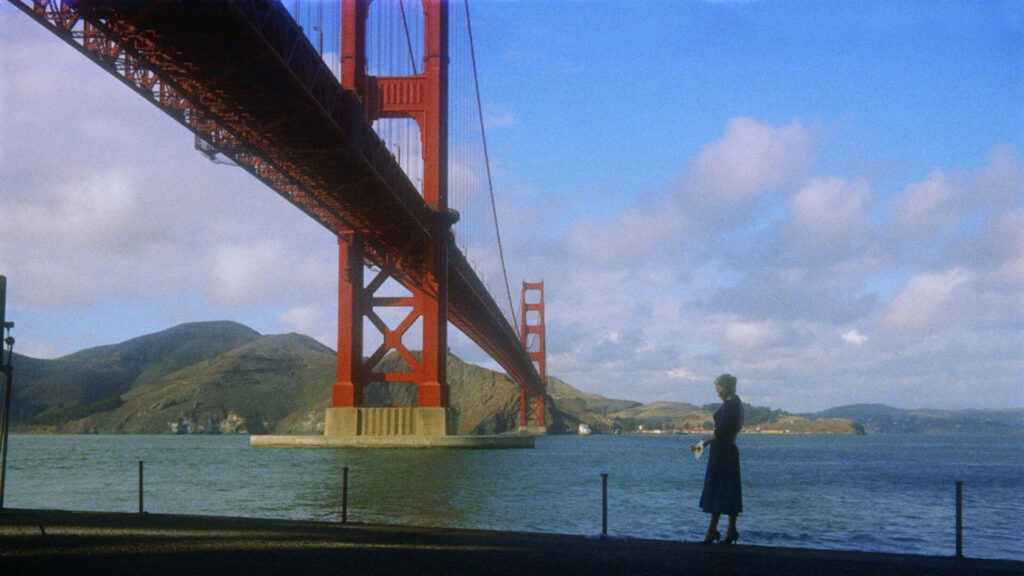
It is difficult to grasp how I have been alive for thirty years and have watched Vertigo for the first time today. In this reconciliation with the Cinema, I am lucky enough to explore Alfred Hitchcock films for the first time, with a child’s eyes. This was the third one, although I watched Psycho several years ago, and I will surely revisit it soon.
John Ferguson (James Stewart) is an ex-layer turned detective who, after a persecution scene, is diagnosed with acrophobia and vertigo, which is incompatible with his job. Soon enough, an ex-colleague asks him to spy on his wife, who has behaved strangely. During his fieldwork, John discovered that Madeleine Elster (Kim Novak) behaves like her great-grandmother Carlotta Valdes, who possesses Madeleine and tries to drive her to suicide.
The film’s music is irreprehensible, as it should be in a Hitchcock movie, to create the characteristic suspenseful atmosphere. The locations chosen, between the studio of Midge, John’s house, San Francisco and The Mission San Juan Bautista, are enough to make it diverse and compel the viewer to miss when films were shot in real places. The rhythm is appropriate as the director paves the way to show Madeleine’s strange behaviours; the first twist occurs in the middle of the movie, and the climax happens right before the end, making the two-hour duration appropriate.
I loved the actuation of Kim Novak as Madeleine Elster. The subtle changes she makes when personifying Madeleine, Carlotta, or Judy are impressive, and they lead the viewer to forget that she is an actress and is supposed to do precisely that. I look forward to seeing her again in another film from the vault. A note to the plot: I would not need Madeleine and John to fall in love. I understand that it is crucial for the end of the film, but I guess John would follow Madeleine the same way through the church tower stairs simply because he was a detective and would not want anything bad to happen to her. This love relationship forces the movie’s dynamic and turns the character of Midge (Barbara Bel Geddes) unnecessary. Midge could also have done more for herself and her relationship with John. Her passivity might have triggered John to fall in love with Madeleine. I am afraid that if the film were released today, feminist groups would blame John for falling in love with Madeleine and not with Midge because of her beauty. I am happy it is not like that, but I am curious to know how the directors will handle this character in future remakes, if there are any.
Another weakness for me was Judy’s unmasking, which focused exclusively on the necklace that belonged to Carlotta. If John had been such a good detective, his obsession would not have blinded him to the point where he did not see other signs. Hitchcock emphasised the necklace in Charlotta’s painting, so it was obvious when Judy put it on… it is a pity that Madeleine never wore it, as it would be a full circle and maybe justify more the easy clue given by the director.
Overall, I understand why this film is highly regarded, and I look forward to continuing to explore Hitchcock’s universe.